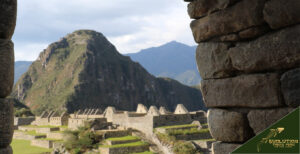
Inca Stone Monument in Cusco Suffers Irreparable Damage

# **Vandalism of the 12-Angled Stone in Cusco: A Blow to Peru’s Cultural Heritage**
Peruvian authorities have recently reported a disturbing case of vandalism targeting one of the country’s most revered historical artifacts—the 12-Angled Stone in Cusco. This act of destruction has sparked widespread outrage among cultural preservationists, government officials, and citizens alike, highlighting the vulnerability of ancient monuments to reckless human actions.
## **What Happened?**
On February 18, 2024, an individual reportedly caused irreversible damage to the famous Inca stone, chiseling away at six different places on its surface. The perpetrator, believed to be a Peruvian national, was allegedly under the influence of alcohol or drugs at the time of the incident. Authorities swiftly apprehended the suspect, whose actions have been classified as an attack on Peru’s cultural patrimony.
## **The Significance of the 12-Angled Stone**
The 12-Angled Stone, located on Hutan Rumiyoq Street in Cusco’s historic city center, is an architectural marvel that dates back to the Inca Empire. It is named for its unique polygonal shape featuring 12 distinct edges. The stone was an essential part of the residence of the sixth Inca ruler, Inca Roca, who governed between 1350 and 1380. It later became part of the foundation of the Archbishop’s Palace of Cusco, which today houses the Museum of Religious Art.
This diorite block is an outstanding example of Inca engineering. The Incas were renowned for their dry-stone construction techniques, precisely fitting massive stones together without mortar. Their structures have survived for centuries, resisting earthquakes and other environmental factors due to their ingenuity. The 12-Angled Stone exemplifies this mastery, making the recent vandalism an even greater loss for Peru’s cultural heritage.
## **Legal and Cultural Consequences**
Following the incident, Jorge Moya Coháguila, director of Cusco’s Decentralized Directorate of Culture, announced that the agency would push for the maximum legal penalty against the suspect—up to six years in prison. This sentence aligns with existing legislation that protects Peru’s historical treasures and aims to deter similar crimes in the future.
Peruvian cultural authorities have also responded by calling for stronger measures to protect national heritage. A working group comprising representatives from the National Police of Peru, the Public Prosecutor’s Office, and Cusco officials is set to devise new safeguarding strategies. These efforts will focus on increased surveillance, stricter enforcement of heritage protection laws, and public awareness campaigns to foster respect for cultural sites.
## **Public Outrage and Calls for Preservation**
The incident has triggered widespread condemnation. Peru’s Ministry of Culture issued a statement urging all citizens to unite in defending the country’s cherished historical sites, emphasizing the invaluable significance of the 12-Angled Stone.
“This act of vandalism is an attack on our shared heritage,” the statement read. “We call on all citizens to report any threats against our cultural monuments and to honor their historical importance.”
Beyond the official response, many Peruvians and international observers have taken to social media and public forums to express their indignation. Heritage enthusiasts are calling for heightened security measures and stricter consequences for those who deface historical sites.
## **A Wake-Up Call for Cultural Conservation**
This unfortunate event serves as a stark reminder of the fragility of historical monuments. While Peru boasts a wealth of ancient Inca ruins, ongoing efforts must ensure that these irreplaceable sites remain intact for future generations.
Stronger laws, community involvement, and responsible tourism can all play a role in protecting sites like the 12-Angled Stone. Cultural preservation is not only a responsibility of governments but also of citizens and visitors who appreciate the significance of these historical treasures.
The vandalism of the 12-Angled Stone is a tragedy, but it also presents an opportunity for Peru to reassess its policies and reinforce the protection of its national heritage. By taking swift and decisive action, authorities can prevent similar instances of destruction and ensure that the legacy of the Inca civilization endures for centuries to come.